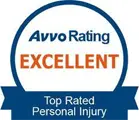Can You File a Claim If You Were Jaywalking During a Pedestrian Accident in Tampa?
Pedestrian accidents can result in serious injuries and even death. When a car hits a pedestrian, questions often arise about who is at fault and what legal options are available. Many pedestrians assume that if they were jaywalking at the time of the accident, they cannot file a claim—but this is not always the case.
If you were involved in a pedestrian accident while jaywalking in Tampa, you may be unsure of your rights and whether you can file a claim for compensation. It is natural to feel concerned and confused in this situation. While jaywalking is illegal, it does not automatically disqualify you from seeking compensation if you suffered an injury due to someone else’s negligence.
The circumstances of each case are unique, making it imperative to consult with a Tampa pedestrian accident attorney who can assess the specifics of your situation and guide you on the best course of action. Contact a Tampa pedestrian accident attorney to discuss your case and understand your legal rights.
Understanding Florida’s Pedestrian Laws and Jaywalking
Like many other states, Florida has specific laws regarding pedestrian safety and jaywalking. Understanding these laws is imperative in determining your rights and liability in the event of a pedestrian accident while jaywalking in Tampa.
What is Jaywalking?
Jaywalking occurs when a pedestrian crosses a street outside a designated crosswalk or against a traffic signal. In Florida, jaywalking is against the law, as it poses a risk to pedestrians and drivers. The purpose of designated crosswalks and traffic signals is to ensure the safe movement of both pedestrians and vehicles.
Legal Crossings vs. Jaywalking

Florida’s pedestrian laws require pedestrians to use designated crosswalks and pedestrian bridges and obey traffic signals. These laws aim to prevent accidents and protect the safety of pedestrians. When crossing a street, pedestrians should always use marked crosswalks and wait for a signal indicating it is safe to cross.
Jaywalking, on the other hand, involves crossing a street outside of these designated areas without following traffic signals. It increases the risk of accidents and makes it more difficult for drivers to anticipate pedestrian movements.
Why Jaywalking Doesn’t Automatically Bar a Claim
While jaywalking is against the law and can contribute to accidents, it does not automatically disqualify a pedestrian from filing a claim for compensation if they suffered an injury due to someone else’s negligence. If the driver acted negligently, speeded, distracted, or violated traffic laws, they can still be liable for the pedestrian’s injuries.
Courts examine multiple factors to determine liability in pedestrian accident cases. They consider whether the driver was driving under the influence of alcohol or drugs, ignoring traffic signals, or failing to yield when required. If the driver’s negligence causes the accident, the pedestrian may still qualify for compensation, even if they were jaywalking.
If you were involved in a pedestrian accident while jaywalking in Tampa, consult with a pedestrian accident attorney who can evaluate the specifics of your case and guide you through the legal process.
Who is Liable in a Jaywalking Pedestrian Accident?
Determining liability in a jaywalking pedestrian accident can be complex. While jaywalking is against the law in Florida, it does not automatically absolve the driver of their responsibility to exercise caution and avoid hitting pedestrians. Florida law places a duty of care on drivers to be attentive and cautious, regardless of whether the pedestrian is jaywalking or crossing legally at a designated crosswalk.
Driver’s Duty of Care
Florida law requires drivers to exercise reasonable care to avoid causing harm to others, including pedestrians. This duty of care applies even if the pedestrian was jaywalking. The drivers are responsible for maintaining a proper lookout, obeying traffic laws, and being aware of pedestrians and their movements. If a driver fails to fulfill this duty and causes a pedestrian accident, they may be liable for the pedestrian’s injuries.
Negligence of the Driver
In a jaywalking pedestrian accident, the driver may still be negligent if they were engaging in any of the following actions:
- Speeding or driving recklessly
- Driving distracted (texting, using GPS, or adjusting the radio)
- Driving under the influence of alcohol or drugs
- Ignoring traffic signals or failing to yield when required
If the driver’s negligence contributed to the accident, they can be held responsible for the pedestrian’s injuries, even if the pedestrian jaywalked.
Be sure to reach out to a knowledgeable Tampa pedestrian accident lawyer who can assess the specifics of your case and determine the degree of fault of each party involved. An experienced lawyer can gather evidence, handle negotiations with the insurance company, and pursue maximum compensation for your injuries.
Compensation Available for Injured Pedestrians
If you have suffered an injury in a pedestrian accident while jaywalking in Tampa, you may be entitled to compensation. The extent of compensation will depend on the severity and impact of your injuries. A Tampa pedestrian accident attorney can assess your damages and seek appropriate compensation for your case.
Medical Expenses
Medical expenses can quickly accumulate after a pedestrian accident. Compensation for medical expenses typically covers hospital bills, surgeries, rehabilitation, physical therapy, prescription medications, assistive devices, and any other necessary medical treatment. You must keep track of all your medical expenses and provide documentation to support your claim.
Lost Income and Future Earnings
If your injuries prevent you from working, you may be entitled to compensation for lost earnings. This includes the income you have already lost due to your injuries as well as any potential future income loss if your injuries result in long-term or permanent disability. Documentation from your employer and medical professionals may be required to support your claim for lost income.
Pain and Suffering
Pedestrian accidents can cause not only physical pain but also emotional distress and a reduced quality of life. Compensation for pain and suffering aims to provide financial relief for the intangible aspects of your injuries. This compensation can help alleviate the emotional and psychological toll of the accident and its aftermath.
Permanent Disability and Rehabilitation Costs
In some pedestrian accident cases, the injuries sustained may result in a long-term disability that impacts your ability to work and perform daily activities. Compensation for permanent disability provides financial support for ongoing medical care, rehabilitation expenses, assistive devices, and modifications to your living environment to accommodate your disability.
A Tampa pedestrian accident lawyer will thoroughly assess your damages and work towards securing fair compensation for all your losses. They will consider the economic and non-economic impacts of your injuries to protect your rights.
Common Defenses Insurance Companies Use to Deny Jaywalking Claims
When filing a claim for a pedestrian accident while jaywalking in Tampa, you should be aware of the common defenses that insurance companies may use to deny or minimize your claim. Insurance companies are focused on minimizing their payouts and often try to shift blame onto the victim to reduce their liability.
Claiming the Pedestrian Was Solely at Fault
One common defense insurance companies use is to argue that the pedestrian was solely at fault for the accident due to jaywalking. They may argue that the pedestrian willingly put themselves in harm’s way by jaywalking and should not be entitled to compensation. However, as discussed earlier, Florida law places a duty of care on drivers to exercise caution and avoid hitting pedestrians, even if they are jaywalking. You will want a skilled Tampa pedestrian accident attorney who can challenge this defense and prove that the driver’s negligence was a contributing factor.
Disputing the Severity of Injuries
Insurance companies may also dispute the severity of the pedestrian’s injuries to lower the compensation they have to pay. They may argue that the injuries are not as serious as reported or that they were pre-existing conditions unrelated to the accident. You must have strong medical evidence and professional opinions supporting the extent and impact of your injuries to counter this defense.
Delaying the Claims Process
Insurance adjusters may purposely prolong the claims process in hopes that you will settle for a lesser amount out of frustration or financial need. They may request excessive documentation or initiate unnecessary investigations to delay the resolution of your claim. Having a Tampa pedestrian accident lawyer on your side can help expedite the process and promptly ensure you receive a fair settlement.
Using Recorded Statements Against You
Be cautious when speaking with insurance adjusters, and avoid providing recorded statements without consulting with a Tampa pedestrian accident attorney first. Insurance adjusters may try to manipulate your words or twist your statements to minimize their liability. Legal representation protects your rights and prevents you from inadvertently providing information that others can use against you.
How a Tampa Pedestrian Accident Lawyer Can Help
Facing the legal process and taking on insurance companies can be overwhelming, especially when dealing with the aftermath of a pedestrian accident while jaywalking in Tampa. Hiring a Tampa pedestrian accident lawyer can make a significant difference in the outcome of your case and ensure that your rights are protected.
Gathering Evidence to Prove Liability
A seasoned Tampa pedestrian accident lawyer can gather the necessary evidence to establish liability in a jaywalking pedestrian accident. They can obtain surveillance footage, interview witnesses, analyze accident reports, and consult with accident reconstructionists. Such evidence is necessary to build a strong case and prove that the driver’s negligence was the primary cause of the accident.
Negotiating with Insurance Companies
Dealing with insurance companies can be challenging, as they often try to minimize payouts and blame the victim. A Tampa pedestrian accident attorney is experienced in handling negotiations with insurance companies and can fight for your rights. They will vigorously advocate for the maximum compensation you deserve, considering all your damages, including medical expenses, lost earnings, pain and suffering, and other applicable losses.
Representing You in Court If Necessary
While most pedestrian accident cases settle through negotiations with insurance companies, some cases involve situations where a fair settlement is impossible. A Tampa pedestrian accident attorney can represent you in court and present your case before a judge and jury. They will use their experience and legal skills to present compelling arguments and seek a favorable outcome on your behalf.
Ensuring Compliance with Florida Laws
The legal process can be complex, and you must follow strict deadlines and requirements to pursue a pedestrian accident claim. Your Tampa pedestrian accident lawyer will file all necessary documents correctly and within the specified time limits. They will navigate the legal system on your behalf, freeing you from the stress and ensuring compliance with Florida laws.
Having a pedestrian accident lawyer by your side can give you peace of mind and confidence throughout the legal process. They will be your advocate, fighting for your rights and ensuring you receive the compensation you deserve.
Florida’s Statute of Limitations for Pedestrian Accident Claims

When filing a claim for a pedestrian accident while jaywalking in Tampa, you must be aware of Florida’s statute of limitations. The statute of limitations sets a time limit for filing a lawsuit, and failing to file within this timeframe can cause you to lose your right to seek compensation for your injuries.
In Florida, the statute of limitations for pedestrian accident claims is generally two years from the accident date. You have two years from the accident date to file a lawsuit against the at-fault party. If you fail to file within this timeframe, the court may dismiss your case, and you may lose the opportunity to pursue compensation.
There are exceptions to the statute of limitations in certain cases. For instance, if the victim is a minor at the time of the accident, the claim deadline may be extended.
Act quickly and consult a pedestrian accident lawyer if you have a valid claim. Delays can weaken evidence, make it harder to secure full compensation, and jeopardize your ability to file a lawsuit within the statute of limitations.
Contact a Tampa Pedestrian Accident Lawyer Today
If you have been involved in a pedestrian accident while jaywalking in Tampa, don’t assume you have no case. Even if you were jaywalking, you may still be entitled to compensation for your injuries. Seeking legal advice from a reputable Tampa pedestrian accident lawyer is the best way to understand your rights and legal options.
Protecting your rights and securing maximum compensation is imperative, and the sooner you consult an attorney, the stronger your case will be. Contact a Tampa personal injury lawyer today to learn about your options and take the first step toward justice and recovery.





























 The danger of pedestrian accidents cannot be overstated. Thousands of pedestrians
The danger of pedestrian accidents cannot be overstated. Thousands of pedestrians  Pedestrians often break bones, suffer internal injuries, face brain trauma, and experience other serious ailments due to their lack of protection from oncoming vehicles. These and other injuries can cause:
Pedestrians often break bones, suffer internal injuries, face brain trauma, and experience other serious ailments due to their lack of protection from oncoming vehicles. These and other injuries can cause:










